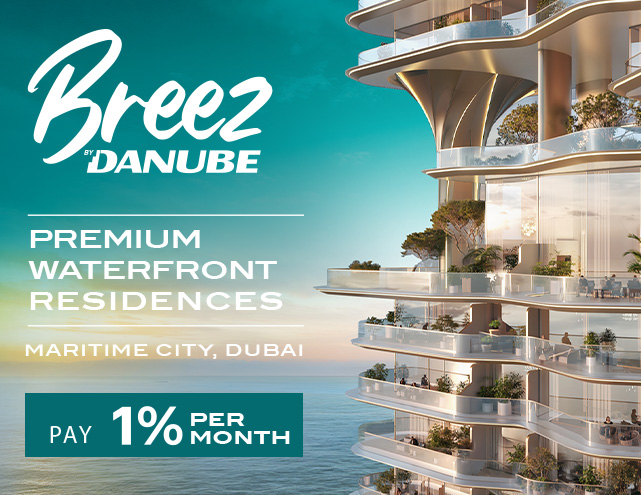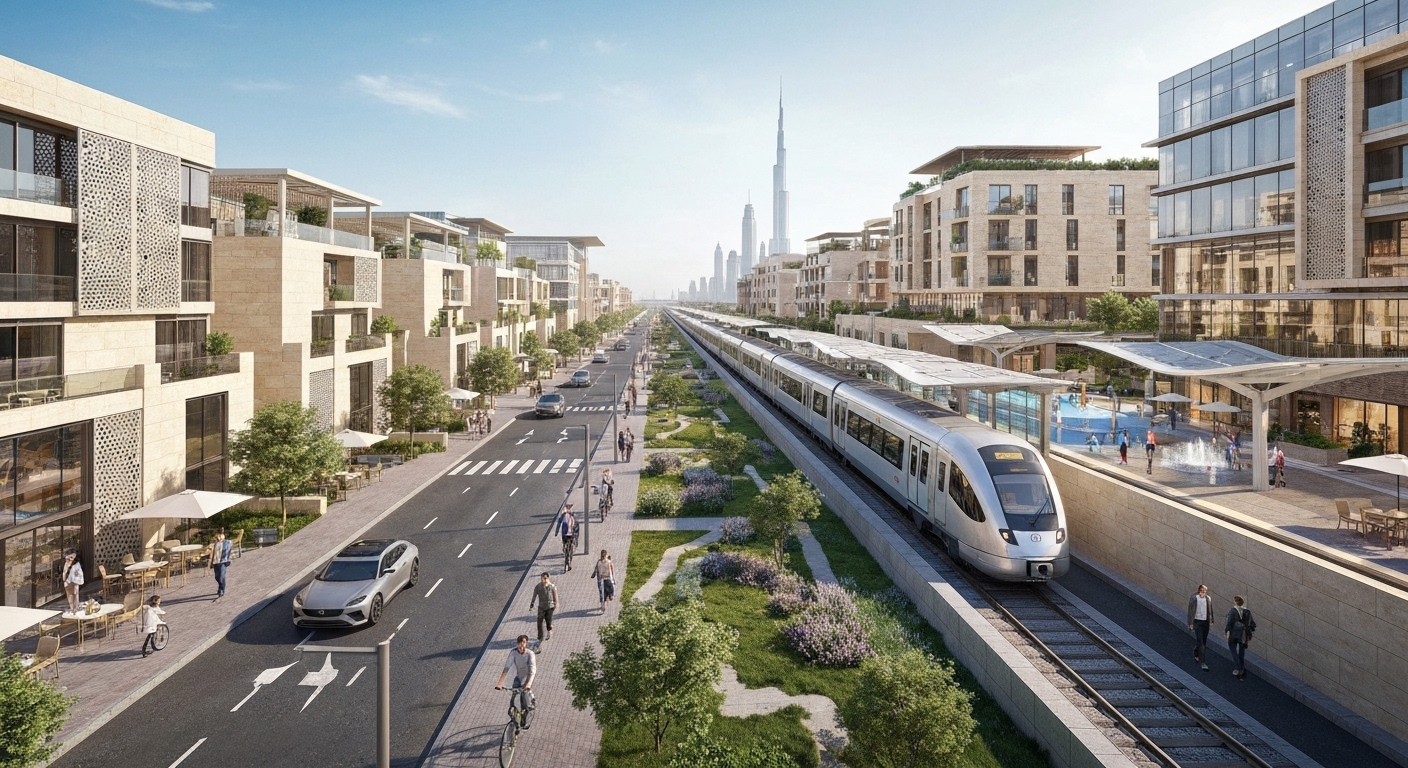The Etihad Rail Vision: Connecting the UAE and Beyond
The Etihad Rail project represents one of the most ambitious infrastructure developments in the Middle East, fundamentally transforming how the UAE connects internally and regionally. This comprehensive rail network spans approximately 1,200 kilometers, linking all seven emirates and extending connections to Saudi Arabia and beyond. For Dubai’s residential property market, this connectivity revolution creates unprecedented opportunities for value appreciation and investment growth.
The rail system’s integration with Dubai’s existing transport infrastructure, including the metro and airport systems, positions the emirate as a central hub in a broader regional network. This enhanced connectivity directly influences residential property demand patterns, particularly in areas with strategic proximity to rail stations and transport interchanges.
Direct Impact on Dubai’s Residential Property Values: What the Data Says
Infrastructure developments consistently drive property value appreciation in Dubai, and Etihad Rail is poised to accelerate this trend significantly. Historical data from the Blue Line Metro extension demonstrates how transport connectivity improvements can boost property values by 15-25% along transit corridors within 24 months of completion.
Dubai’s continued commitment to world-class infrastructure enhances property values in emerging districts, with expanding road networks, public transport systems, and community facilities creating new hotspots for investment with significant growth potential. The rail network’s impact extends beyond immediate proximity effects, influencing broader market dynamics through improved accessibility and reduced travel times.
With over 28,000 units scheduled for completion in 2025, the market maintains a healthy balance between new supply and absorption rates. This equilibrium supports sustainable price appreciation without overheating risks, creating optimal conditions for strategic investments aligned with rail development timelines.
Key Residential Hotspots Poised for Growth Along the Etihad Rail Network
Strategic investors should focus on residential areas that combine rail accessibility with Dubai’s existing growth trajectories. Dubai Silicon Oasis emerges as a prime investment zone, benefiting from both technology sector expansion and enhanced connectivity through rail integration.
Areas surrounding planned rail stations present compelling opportunities for early-stage investment. These locations offer the dual advantage of current affordability and future appreciation potential as the rail network approaches completion. Community-focused developments in these zones are particularly attractive, integrating residential and commercial sectors while maximizing operational convenience.
The integration of Etihad Rail with Dubai Airport expansion creates additional value drivers for nearby residential properties. Properties within a 30-minute rail journey to the airport command premium pricing due to the convenience factor for international residents and frequent travelers.
Beyond Connectivity: Analyzing the Socio-Economic Ripple Effects on Housing
Etihad Rail’s impact extends far beyond transportation convenience, creating fundamental shifts in Dubai’s residential landscape. The rail network facilitates workforce mobility, enabling residents to live in more affordable areas while maintaining access to employment centers. This dynamic supports sustainable community development and housing diversity.
Environmental consciousness has moved from marketing buzzword to fundamental design consideration in Dubai’s real estate sector. Rail connectivity aligns with sustainability goals, reducing carbon footprints and supporting eco-friendly development initiatives that increasingly attract modern investors and residents.
The socio-economic effects include enhanced lifestyle options, with residents gaining access to broader recreational, cultural, and commercial opportunities across the emirates. This lifestyle enhancement translates directly into residential property desirability and value retention.
Strategic Considerations for Residential Investors and Homeowners in the Rail Era
Successful rail-era investment requires strategic timing and location selection. Properties purchased during pre-completion phases offer maximum appreciation potential, but investors must carefully evaluate completion timelines and market absorption rates.
Dubai’s tax-friendly environment, coupled with high safety standards and political stability, positions it as an attractive destination for international capital seeking secure returns. The rail development amplifies these advantages by improving long-term market fundamentals.
Investment strategies should consider both short-term rental yields and long-term appreciation potential. Properties near rail stations typically command higher rental rates due to convenience premiums, while also offering stronger capital growth prospects.
Mitigating Risks and Maximizing Opportunities in Dubai’s Evolving Property Landscape
Risk mitigation requires diversified location strategies and careful market timing. While rail proximity offers significant advantages, investors should avoid over-concentration in single corridors or development phases.
Supply-demand equilibrium analysis becomes crucial in the rail era, as connectivity improvements can accelerate absorption rates in previously slower-moving areas. Monitoring pipeline developments and completion schedules helps optimize entry and exit timing.
Currency fluctuations and global economic uncertainties require hedging strategies, though Dubai’s market stability provides natural protection against many international volatilities.
The Future of Dubai’s Residential Market: A Long-Term Outlook with Etihad Rail
The completion of Etihad Rail marks a transformational moment for Dubai’s residential market, establishing the emirate as a regional connectivity hub with enhanced investment appeal. Long-term projections indicate sustained value appreciation in rail-connected areas, supported by population growth and economic diversification.
Smart, sustainable homes with premium amenities command increasing market premiums, particularly when combined with rail accessibility. This trend reflects evolving buyer preferences for integrated lifestyle solutions and convenience-focused living.
The rail network’s regional connections open new demographic segments to Dubai’s residential market, including professionals and investors from neighboring emirates and countries. This expanded market base supports long-term demand sustainability and value growth potential.
Strategic investors positioning themselves ahead of rail completion stand to benefit from both the immediate infrastructure value uplift and the long-term market transformation that enhanced regional connectivity will deliver.




